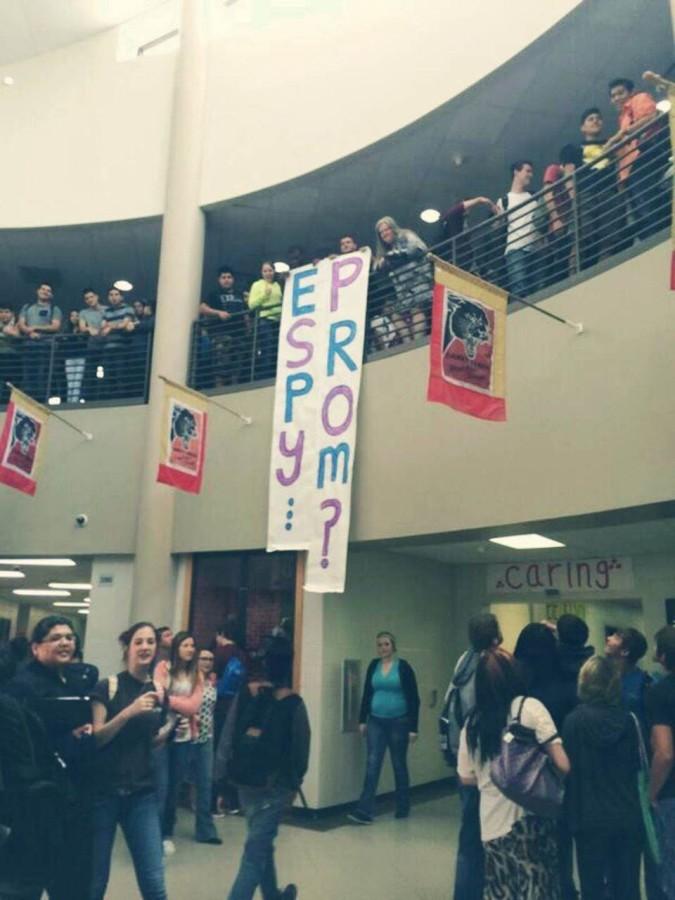Prom 101
Photo: submitted photo
Sergio Sandoval asks Espy Harper to prom.
May 8, 2014
Prom first began in the late 1800’s. However, rather than being available to everyone, prom was restricted to wealthy seniors. One of the reasons to hold a dance for the seniors was to help them develop good social skills. By the 1950’s, prom evolved and became classier; being held in a nicer venue rather than the school. Dates to prom, elections and themes were now a big part of the event. As more time went by, prom became known as the coming-of-age party.
One of the traditions involved for the guy to go to his date’s house to pick her up. Once he arrives, he should put a corsage on her wrist or pinned to her dress. The girl then gives him a boutonniere, which will be pinned onto his jacket. Most couples then go out to dinner with friends and then make their way to prom.
Once they arrive, there are many options. Sometimes a photo booth and/or a photographer is there to take their pictures. Most people will take the chance to go out to the dance floor and dance with their friends or dates. A DJ or a live band may be arranged for the event. The music played is typically dance remixes of today’s top hits, slow songs and the popular line dances that play at most parties.
Some schools have a tradition of holding a post-prom event to ensure the guests will stay safe. They promote no drugs and alcohol and by holding this event, they hope to keep everyone safe. It includes snacks and drinks as well as games and prizes. It is free and students are allowed to stay overnight if they wish.
Parents sometimes think that prom may end with dangerous situations or bad decisions. To ensure that the night is safe, be sure to be around the right group of people; don’t let peer pressure take over and enjoy the celebration of prom!








